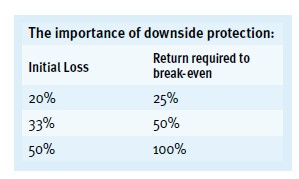The idea of value investing was established by Benjamin Graham in the early 1930s. Graham worked as an investment manager and lecturer at Columbia University, and authored the two books that form the foundation of value investing theory: Security Analysis (with David Dodd) and The Intelligent Investor. One of Graham’s students was Warren Buffet, who is perhaps the best-known value investor.
The concept is a simple one: By focusing on fundamental company analysis, investors can outperform the stock market by identifying and investing in companies that trade at a discount to their intrinsic value, typically measured in terms of their earnings potential, the value of their assets or ability to generate dividend income.
Contrarian thinking
Value investors don’t believe in the efficient-market hypothesis, which states that share prices already include all information about a company. Instead, value investors believe that companies are sometimes under or over-priced. Not only do they reject the efficient-market hypothesis, but they are often contrarians. When everyone is buying, value investors are often selling or standing back and when everyone is selling, they’re typically buying or holding shares.
Value investing is a long-term strategy and it can take several years before investments reach their intrinsic value. As with most investment strategies, proponents must have the patience and diligence to stick with their investment philosophy even though they will occasionally lose money. Also, sometimes value investors may identify a particular company they want to invest in but will have to wait for its share price to fall before investing.
Ultimately, value investors care most about a company’s intrinsic value and they want to own companies that they know have sound fundamentals and financials, regardless of what other investors are saying or doing. The discount between a company’s share price and the higher intrinsic value is what Graham called the ‘margin of safety’.
As another famous value investor, Seth Klarman, explains: “A margin of safety is achieved when securities are purchased at prices sufficiently below underlying value to allow for human error, bad luck or extreme volatility.”

Value versus Growth
While value investing typically involves the hunt for ‘diamonds in the rough’, growth funds in contrast focus on companies expected to experience faster than average growth in the form of revenues, profits or cash flow. While growth funds are expected to offer the potential for higher shareholder returns, they also generally represent higher risk than value funds.
Generally speaking, growth funds tend to outperform the market when share prices are rising and underperform when equity prices fall. As a result, investing in growth funds may require a slightly higher tolerance for risk, as well as a longer time horizon. In comparing value and growth funds, many studies* show that value funds typically outperform over the long-term, provided sufficient portfolio rebalancing is carried out.
* Fama and French - Value Versus Growth: The International Evidence (1997); Ibbotson Associates - A Comprehensive Set of Growth and Value Data (2003); The Brandes Institute - Value vs. Glamour: A Global Phenomenon (2008)




